Plants need light to survive, but what happens when they are placed behind frosted glass windows? Can they still get enough light to grow and thrive? While the answer is not a simple yes or no, it is possible for some plants to survive behind frosted glass depending on the type of plant and the climate conditions.
Understanding how light affects plants is crucial when considering whether or not they can thrive behind frosted glass. Plants need light for photosynthesis, a process that helps them produce their own food.
While natural light is the best source of light for plants, they can also photosynthesize through artificial light sources. However, the intensity and duration of light exposure are important factors to consider.
The impact of frosted glass on light is also an important consideration. Frosted glass diffuses light, making it less intense and more indirect than clear glass.
This can be beneficial for some plants that prefer indirect light, but it can also be a hindrance for plants that require intense light exposure. Additionally, the thickness of the glass and the orientation of the window can also affect the amount and quality of light that plants receive.
Key Takeaways on Can Plants Receive Adequate Light Through Frosted Glass?
- Plants can survive behind frosted glass, but it depends on the type of plant and the climate conditions.
- Understanding how light affects plants is crucial when considering whether or not they can thrive behind frosted glass.
- The impact of frosted glass on light can be beneficial or hindering, depending on the plant’s light requirements.
Check out these other related posts:
- Do Fruit Flies Lay Eggs in Plants?
- Do Monstera Plants Thrive in Root Bound Conditions?
- Do Air Plants Bloom More Than Once?
Understanding Light and Plants

The Role of Light in Photosynthesis
Light is an essential factor in the process of photosynthesis, which is the process by which plants produce energy from sunlight. The energy from sunlight is used to convert carbon dioxide and water into glucose, which is used as food by the plant.
The process of photosynthesis occurs in the chloroplasts of the plant cells, which contain the pigment chlorophyll. Chlorophyll absorbs the energy from the sun and converts it into chemical energy, which is used to power the process of photosynthesis.
Light Requirements of Plants
Plants require light for photosynthesis, but not all light is equal. Plants require a specific range of light wavelengths for optimal growth and productivity.
The visible light spectrum ranges from violet to red, with blue and red rays being the most important for photosynthesis. Blue light is important for vegetative growth, while red light is important for flowering and fruiting.
The amount of light that plants require varies depending on the species of plant and the stage of growth. Some plants require full sunlight, while others can thrive in low light conditions. Plants that are grown indoors require sufficient light to photosynthesize, but the light source may be limited by frosted glass.
Frosted glass can reduce the amount of light that plants receive, but not all plants are affected equally. Some plants, such as succulents, cacti, and tropical plants, can thrive in the indirect light that comes from frosted glass. Other plants may require more direct sunlight and may not grow as well behind frosted glass.
The Impact of Glass on Light
Properties of Glass
Glass is a transparent material commonly used in windows, doors, and other structures to allow natural light to enter. It is made by melting silica sand, soda ash, and limestone at high temperatures.
Glass has unique properties that affect the way light passes through it. It is transparent to visible light, but it can block or reflect ultraviolet (UV) rays, which can be harmful to humans and plants.
How Glass Alters Light
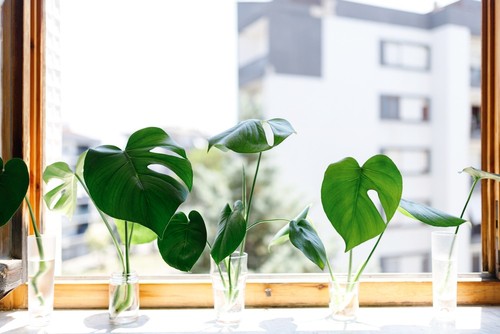
The way glass alters light depends on its composition and thickness. Clear glass allows most visible light to pass through, but it can also absorb and reflect some of it. This can cause glare and heat buildup, which can be detrimental to plants. UV rays can also be harmful to plants, but some types of glass can block or reflect them.
Frosted glass is a type of glass that has been treated with acid or sandblasting to create a frosted or opaque appearance. This type of glass diffuses light, which can help create an even light source that is better for plants than direct light.
Plants can still get enough light through frosted glass to survive, but the amount of light they receive may be reduced compared to clear glass.
Window film and window tint are other options that can be used to alter the way light passes through glass. Window film is a thin layer of material that can be applied to the surface of glass to reduce glare, heat buildup, and UV rays.
Window tint is a type of film that can be applied to car windows and other types of glass to reduce the amount of visible light that passes through.
Frost Matte by Madico is a type of frosted window film that has an excellent visible light transmittance of 67%. This type of film can be used to provide your plants with the light they require, even in low-light areas or south-facing windows.
Frosted Glass and Plants
Light Through Frosted Glass
Frosted glass is a popular choice for windows as it provides privacy while still allowing light to pass through. However, the amount of light that can pass through frosted glass is significantly reduced compared to clear glass. The degree of frosting will also affect the amount of light that can pass through.
Plants can still photosynthesize even if their light source passes through a glass windowpane. However, the amount of light that passes through frosted glass may be insufficient for some plants to thrive.
Effect on Plant Growth
The amount of light that passes through frosted glass can have a significant impact on plant growth. Plants require a certain amount of light intensity to grow and thrive. If the light intensity is too low, the plant may not be able to photosynthesize enough to grow properly.
That some plants can survive behind frosted glass depending on the type of plant and the climate conditions. For example, succulents, cacti, and tropical plants can thrive in the indirect light that comes from frosted glass. However, other plants may not be able to survive in such conditions.
Choosing the Right Location
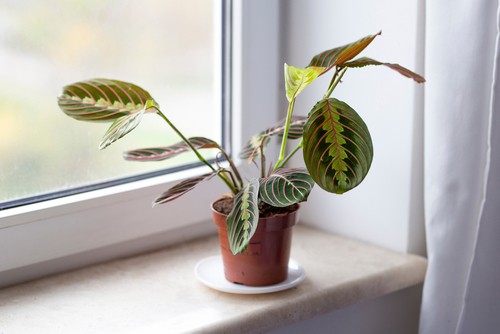
When it comes to growing houseplants, choosing the right location is crucial. This includes considering the orientation of your windows and the type of plants that will thrive in each direction.
Understanding Window Orientations
Windows come in different orientations, including east, west, south, and north-facing windows. East-facing windows receive morning light, while west-facing windows receive afternoon light. South-facing windows receive the most direct sunlight throughout the day, while north-facing windows receive the least amount of light.
Best Plants for Each Direction
Different plants have different light requirements, so it’s important to choose plants that are suitable for the direction of your windows. Here are some suggestions:
- East-facing windows: Plants that prefer bright, indirect light are ideal for east-facing windows. These include ferns, ivy, and peace lilies.
- West-facing windows: Plants that can tolerate direct afternoon sunlight are best for west-facing windows. These include succulents, cacti, and spider plants.
- South-facing windows: Plants that require direct sunlight are perfect for south-facing windows. These include herbs, tomatoes, and peppers.
- North-facing windows: Plants that can tolerate low light conditions are ideal for north-facing windows. These include snake plants, pothos, and ZZ plants.
It’s important to note that frosted glass can still allow enough light to pass through for plants to survive. The frosted glass allows light to diffuse, which can create an even light source that is better for plants than direct light. However, if you have plants that require direct sunlight, it’s best to place them in a window with clear glass.
Seasonal Considerations
1. Winter Plant Care
In winter, plants need more light to photosynthesize and grow. However, the amount of daylight is limited, and the sun is often weaker. This can be a problem for plants growing behind frosted glass, as the glass can further reduce the amount of light they receive. As a result, it is important to ensure that plants receive enough light to survive.
One way to help plants get enough light is to move them closer to the window. This can help increase the amount of light they receive. Another option is to use artificial light sources, such as grow lights. These lights can provide the necessary light for plants to grow, even in the darkest winter months.
2. Summer Plant Care
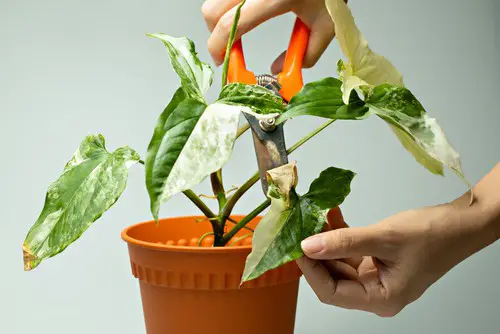
In summer, the days are longer, and the sun is stronger. This can be a problem for plants growing behind frosted glass, as the glass can amplify the sun’s rays, causing the plants to overheat. To prevent this, it is important to keep the plants away from direct sunlight.
One way to help plants survive in the summer is to move them away from the window. This can help reduce the amount of heat they receive. Another option is to use shading devices, such as blinds or curtains, to block the sun’s rays. This can help keep the plants cool and prevent them from drying out.
3. Temperature
Temperature is another important consideration when caring for plants growing behind frosted glass. In winter, it is important to keep the plants away from cold drafts. This can cause the plants to become stressed and can even kill them. To prevent this, it is important to keep the plants away from windows and doors that are frequently opened.
In summer, it is important to keep the plants away from hot spots. This can cause the plants to overheat and can even cause their leaves to burn. To prevent this, it is important to keep the plants away from windows that receive direct sunlight.
4. Daylight
Finally, it is important to ensure that plants receive enough daylight to survive. In winter, this can be a challenge, as the days are shorter and the sun is weaker. To help plants get enough light, it is important to move them closer to the window or use artificial light sources.
Additional Factors Influencing Plant Health
1. Water and Soil Requirements
In addition to light, water and soil are important factors influencing plant health. Different plants have different water and soil requirements, so it is important to research the specific needs of each plant to ensure optimal growth. Overwatering or underwatering can both lead to problems such as root rot or dehydration, which can negatively impact plant health.
Soil quality is also important, as it provides nutrients and support for the plant. Different plants require different types of soil, such as sandy or loamy soil. It is important to ensure that the soil is well-draining and that the plant is not sitting in water, as this can lead to root rot.
2. Temperature and Humidity
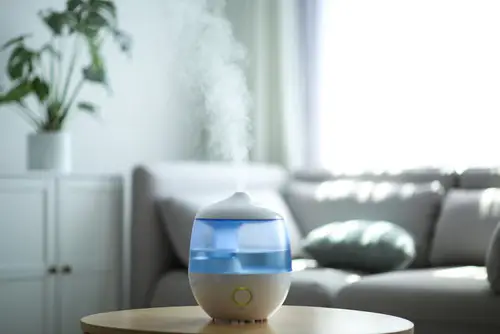
Temperature and humidity are two additional factors that can affect plant health. Different plants have different temperature and humidity requirements, so it is important to research the specific needs of each plant.
High temperatures can lead to wilting and dehydration, while low temperatures can cause damage to the plant’s cells. Humidity is also important, as it can affect the plant’s ability to absorb water and nutrients.
In general, most plants prefer a temperature range of 60-75°F (15-24°C) and a humidity level of around 50%. However, some plants may require higher or lower temperatures and humidity levels to thrive.
Alternatives to Natural Light
When natural light is not available or sufficient for plant growth, there are alternatives that can be used to help plants thrive. This section will cover two of the most common alternatives: artificial light sources and using reflective surfaces.
1. Artificial Light Sources
Artificial light sources can be used to supplement or replace natural light for plants. Grow lights are a popular option for indoor gardening and can provide the necessary light spectrum for plant growth.
There are many types of grow lights available, including fluorescent, LED, and high-pressure sodium lights. Each type of light has its own advantages and disadvantages, so it’s important to choose the right one for the specific needs of the plants being grown.
When using artificial light sources, it’s important to consider the intensity of the light. Intensity is measured in foot-candles and refers to the amount of light that falls on a given surface. Different plants require different levels of intensity, so it’s important to choose a light source that provides the right level of intensity for the plants being grown.
2. Using Reflective Surfaces
Another way to increase the amount of light available to plants is by using reflective surfaces. Reflective surfaces can help to redirect light towards plants and increase the overall amount of light available. Common reflective surfaces include aluminum foil, white paint, and Mylar film.
When using reflective surfaces, it’s important to position them properly to ensure that the light is being directed towards the plants. It’s also important to consider the intensity of the light and adjust the positioning of the reflective surfaces accordingly.
Specific Plants and Frosted Glass
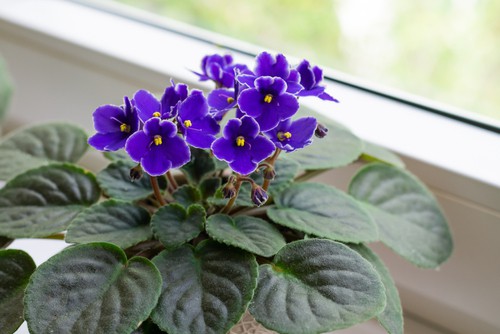
When it comes to growing plants behind frosted glass, some plants will fare better than others. Here are some specific types of plants that can grow well behind frosted glass.
1. Succulents and Cacti
Succulents and cacti are great plants to grow behind frosted glass because they don’t require as much light as other plants. They are adapted to growing in harsh, arid environments where sunlight can be scarce.
However, it’s important to note that even these plants still need some light in order to grow properly. If you’re growing succulents or cacti behind frosted glass, make sure they still receive some direct sunlight each day.
2. Herbs and Vegetables
Herbs and vegetables like basil, peppers, and tomatoes require more light than succulents and cacti. If you’re growing these types of plants behind frosted glass, you’ll need to make sure they receive enough light to thrive. Consider placing them near a south-facing window or supplementing their light with grow lights.
3. Tropical Plants
Tropical plants like fruit trees, shrubs, and other exotic plants can also be grown behind frosted glass. However, these plants require a lot of light and humidity in order to grow properly.
If you’re growing tropical plants behind frosted glass, you’ll need to make sure they receive enough light and moisture to thrive. Consider supplementing their light with grow lights and misting them regularly to maintain humidity levels.
Design Considerations with Frosted Glass
1. Privacy and Light
Frosted glass is an excellent choice for those who want to maintain privacy while still allowing natural light to enter their space. It is particularly useful in bathrooms and other areas where privacy is essential. Frosted glass can be achieved through various methods, including sandblasting, acid etching, and applying a privacy film.
When considering privacy and light with frosted glass, it is essential to think about the degree of frosting. The level of frosting will determine the amount of light that can pass through the glass. A heavily frosted glass will allow less light to pass through, while a lightly frosted glass will let more light in.
To maximize privacy and light, consider using frosted glass in conjunction with other window treatments such as curtains or blinds. This will allow you to control the amount of light that enters the room while still maintaining privacy.
2. Energy Efficiency
Frosted glass can also be an energy-efficient option for windows. The frosting helps to diffuse the light that enters the room, reducing glare and heat gain. This can help to keep the room cooler in the summer months, reducing the need for air conditioning.
In addition to the frosting, other design considerations can help to improve the energy efficiency of frosted glass. For example, double-pane frosted glass windows can provide additional insulation, reducing heat transfer between the inside and outside of the building.
When considering frosted glass for energy efficiency, it is essential to choose a high-quality product. Look for glass that has a low emissivity coating, which helps to reflect heat back into the room. Additionally, consider the orientation of the windows and the amount of direct sunlight they receive throughout the day.
Conclusion
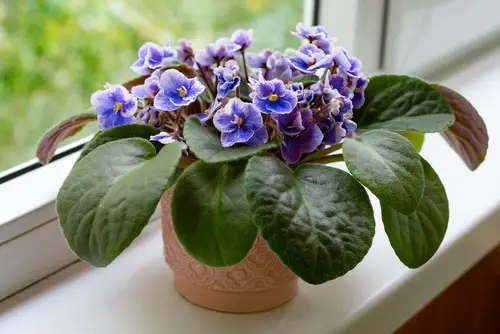
While frosted glass can reduce the amount of light that plants receive, it is not necessarily a death sentence for all houseplants. The amount of light that a plant needs depends on the specific species and its care instructions.
For example, succulents, cacti, and tropical plants can thrive in indirect light, which is often what comes through frosted glass. However, plants that require a lot of natural sunlight, such as tomatoes or peppers, may not do as well behind frosted glass.
It is important to note that while frosted glass may reduce the amount of light that plants receive, curtains and other obstructions can also have a similar effect. Additionally, greenhouse growers often use shade cloths to reduce the amount of direct sunlight that plants receive, so frosted glass is not necessarily any worse than other shading methods.
Ultimately, the best way to ensure that plants receive enough light is to carefully monitor their growth and adjust their placement as needed. If a plant seems to be struggling, it may be necessary to move it to a sunnier location or provide additional artificial light.
Additionally, using containers that are appropriately sized for the plant can help ensure that it receives enough nutrients and water.
Frequently Asked Questions
Can plants photosynthesize through frosted glass?
The answer is not straightforward. It depends on the type of plant and the amount of light it requires. Some plants can survive behind frosted glass, while others cannot.
For example, succulents, cacti, and tropical plants can thrive in the indirect light that comes from frosted glass, while other plants may struggle to photosynthesize properly.
Does sunlight pass through frosted glass?
Frosted glass scatters and diffuses light, making it less intense and more diffuse. Sunlight can still pass through frosted glass, but the amount of light that reaches the plant will be reduced.
Can plants still get sunlight through tinted windows?
Tinted windows can also reduce the amount of light that reaches the plant. The darker the tint, the less light that will pass through. However, plants can still get enough light to photosynthesize through lightly tinted windows.
Do plants need direct sunlight?
Some plants require direct sunlight to photosynthesize properly, while others can survive in indirect light. Generally, plants that require full sun need at least six hours of direct sunlight per day.
Do plants need UV light?
Plants do not need UV light to survive, but it can be beneficial for some plants. UV light can help plants produce more pigments and antioxidants, which can make them more resistant to pests and diseases.
Does frosted glass affect plant growth?
Frosted glass can affect plant growth by reducing the amount of light that reaches the plant. If a plant does not get enough light, it may become leggy, stunted, or produce fewer flowers or fruits. However, some plants can still thrive behind frosted glass if they are adapted to lower light conditions.

Hey, I’m Lisa and I’ve been an avid gardener for over 30 years. I love writing, talking and living in the garden! Feel free to connect with me on my socials below


